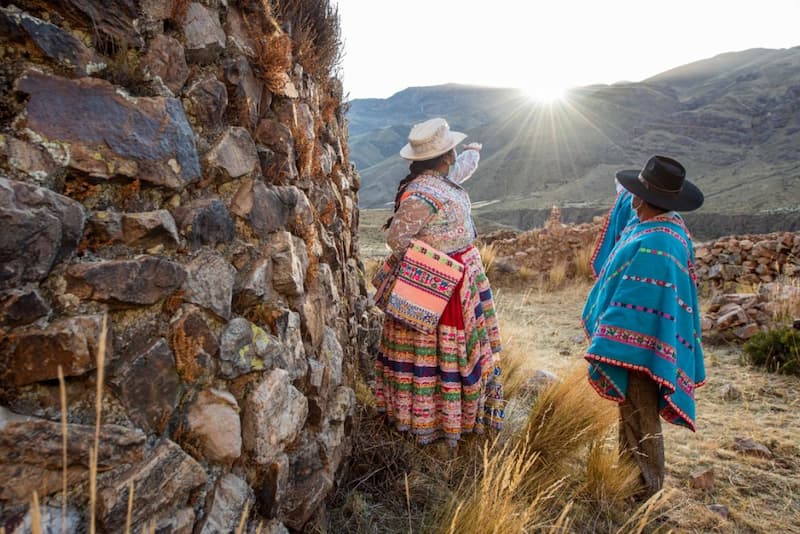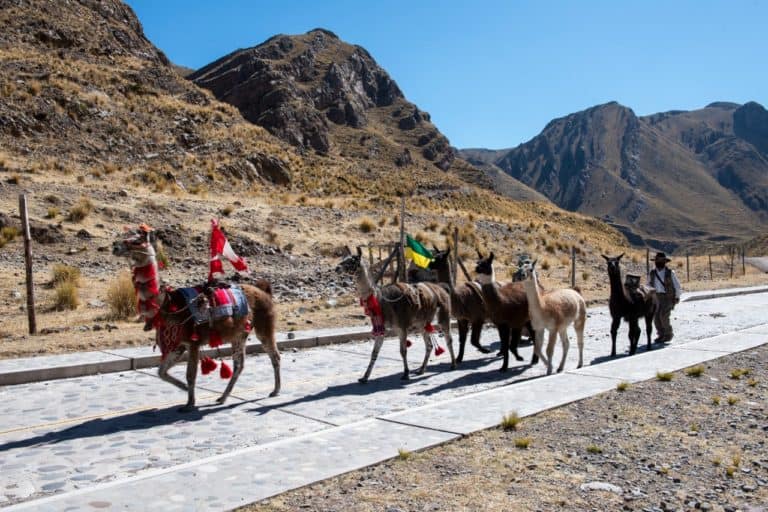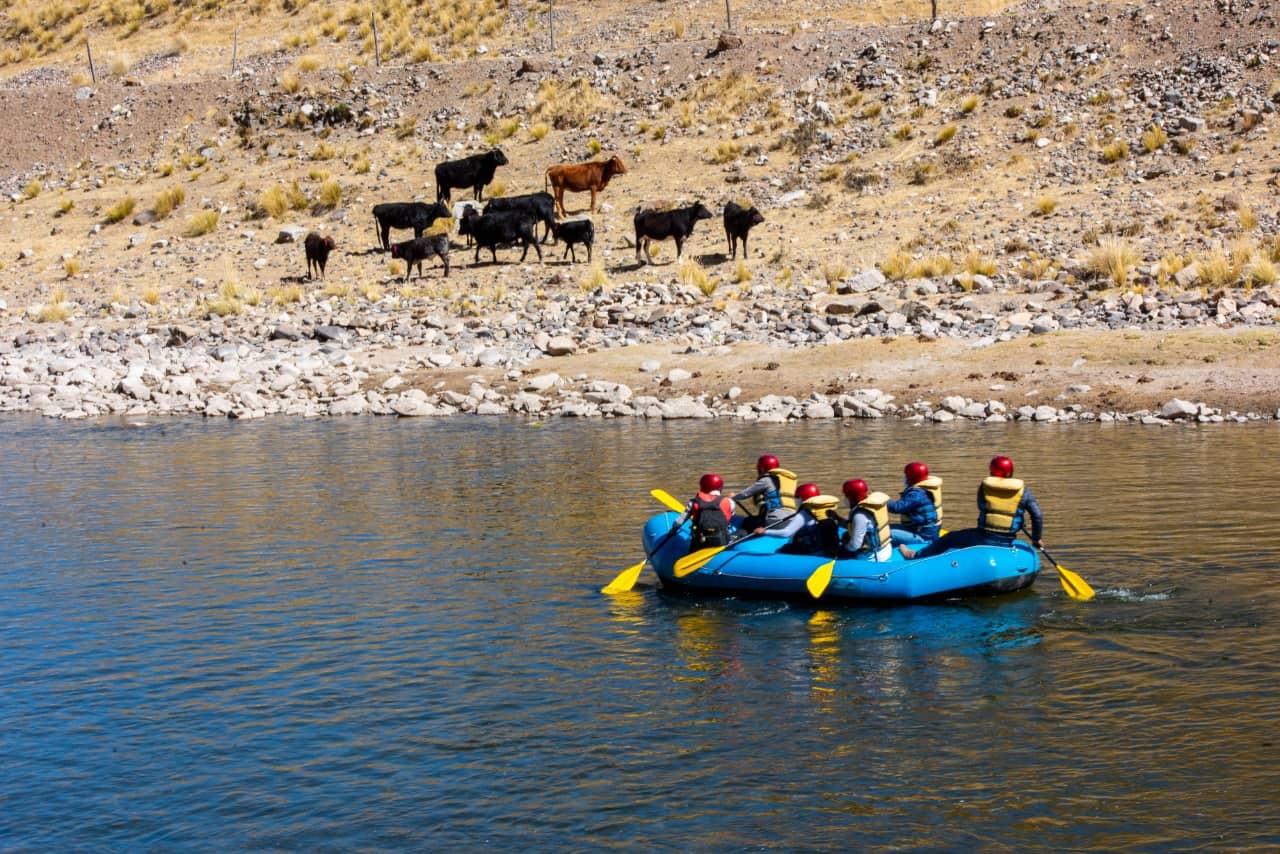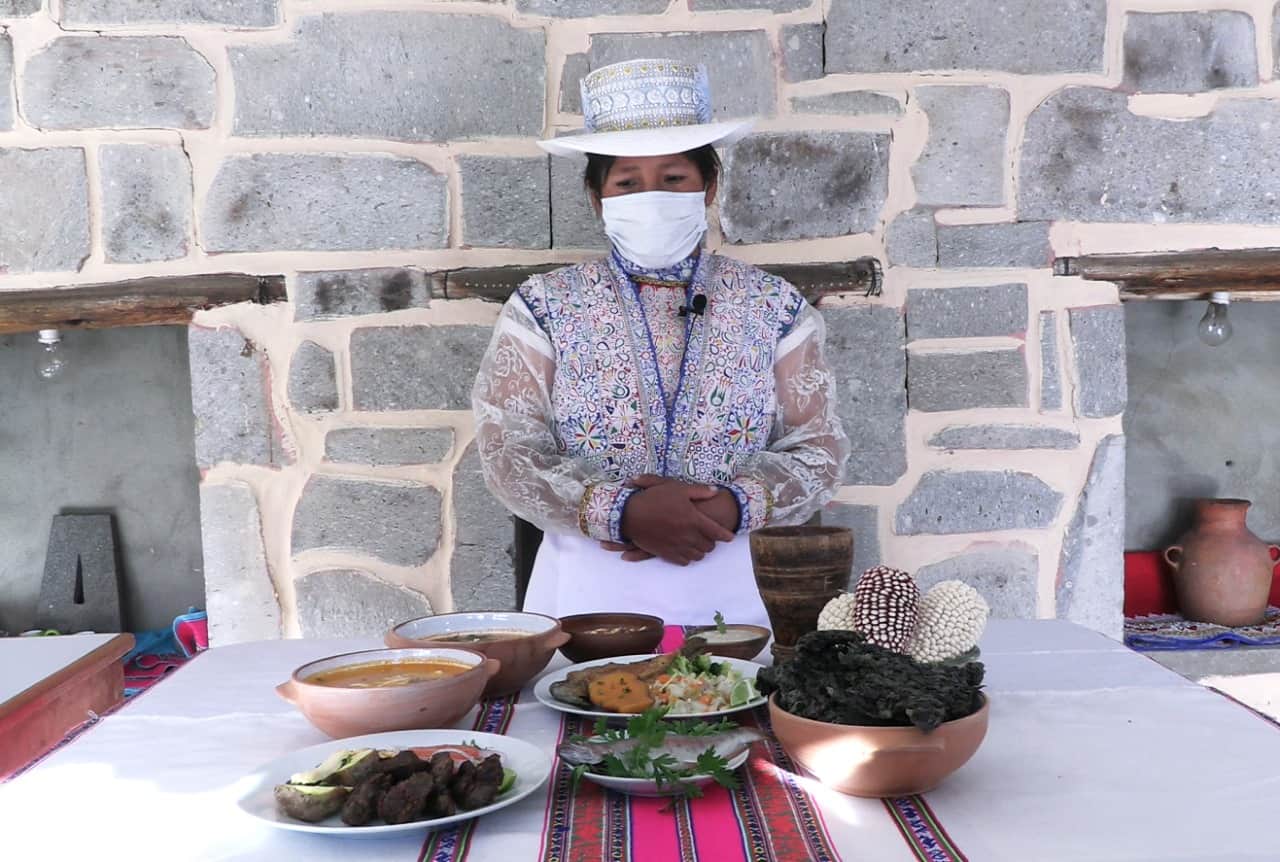Destination Stewardship Report – Winter 2022 (Volume 2, Issue 3)
This post is from the Destination Stewardship Report (Winter 2022, Volume 2, Issue 3), an e-quarterly publication that provides practical information and insights useful to anyone whose work or interests involve improving destination stewardship in a post-pandemic world.
By Their Bootstraps: Homemade Heritage Tourism in Peru

Villagers look to the sun as it rises over the Andes Mountains. [All photo courtesy of Green Destinations]
Submitted by Jeniffer Stephanie Diaz Santivañez, Promotor Touristico.
From Alpacas to Tourists: How the Village of Sibayo Grew a Business

A Sibayo man leads a group of alpacas down a stone pathway to meet visitors. [Photo courtesy of Green Destinations]

Outdoor adventure activities such as rafting have become increasingly popular for visitors of Colca Canyon.
In 2001, the town set out an objective to diversify its economic activities and open up the rural community to tourism, using a framework that bridges the private sector, local authorities, and civil society.
Faced with initial skepticism and resistance to this tourism-based approach, local management worked alongside the population to promote the rural community and dispel any concerns associated with tourist activities. Only after villagers felt supported and that they could trust tourism did the real planning begin – nearly four years later. Experiential tourism was developed, centered around rehabilitating the town’s old stone houses, where food and lodging could be offered, meshed with agritourism concepts, in which tourists could participate in planting, handicraft making, firewood collecting, and walks with the local farmers.

Introducing visitors to traditional cuisine has proven to be an excellent way to foster a connection with local culture.
As Sibayo began to gain attraction, the community evolved and new experiences sprung up, such as hiking to archeological remains, canoeing, cycling, and living the local culture. Women also began to have a leading role in tourism efforts, establishing 12 women-run microenterprises, which has resulted in improved gender equality and women’s empowerment in the region. By implementing community-based tourism, Sibayo’s economy has become dynamic, and tourism has positively affected the economy. The success of the community-based tourism framework has depended on connections between governments, the local people, and private organizations. Thanks to this tourism framework, the locals have been able to access housing sanitation services, improving the living conditions of the community.
To read more about the ingredients that went into these successes, along with how the town is combatting their new test of COVID-related challenges, check out the Green Destinations’s Top 100 story here.
About the Author
Volunteer contributors are welcome to the Destination Stewardship Report. Contact us with your proposals and ideas.




